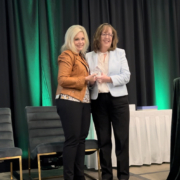Paving the Way for Women in Banking
Wisconsin bankers reflect on the importance of women in industry leadership roles
By Hannah Flanders
In Wisconsin, we are lucky to not only see a growing number of women emerging into leadership positions in banks across the state, but to be surrounded by women in leadership who advocate on behalf of our industry each day.
Women Leading Wisconsin’s Banks
As of September 2022, women in the position of president and/or chief executive officer represented 16* of the over 170 banks in the state. While this number has grown over the course of the last several years, a lack of female mentors and leaders advocating on behalf of their female peers is often cited as a reason why the banking industry continues to be heavily male dominated.
Unfortunately, the stark gender disparity often begins even before individuals enter the workforce. According to UW–Madison’s School of Business, the school has 66% male alumni and only 34% female. This issue is not just the case in Wisconsin. Gender inequality is seen throughout the country at many of the largest business schools and is often reflected in the number of women pursuing careers in banking or finance.
Donna Hoppenjan, president and CEO of Platteville’s Mound City Bank and chair-elect of the WBA Board of Directors, states that “women bankers need to be confident and surround themselves with successful leaders in banking.” To her, a critical aspect of this success is having the confidence to attend training and to build relationships with bankers from other institutions.
It is without a doubt that the banking industry has come a long way — even since the turn of the century. According to Jenny Provancher, chair of The Equitable Bank S.S.B. in Wauwatosa, leaders today are more likely to find a more diverse mix of both male and female decision makers, rather than there being only one or a few women in the room.
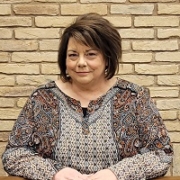
“The true nature of a woman is to be in a leadership role, not to change others, but to be the change we wish to see and then lead by example. The world of banking is changing at a rapid pace; what better time than now to encourage our women bankers to pursue leadership positions and lead by example.”

“For us women fortunate to be in a leadership role, we need to make sure we are visible and serve as mentors. We also need to encourage and develop women early in their career. Awareness of the opportunities is a must.”
Creating Opportunities to Grow
In addition to encouraging team members to attend conferences and training events, and network with other professionals — bankers agree that creating a space where every individual feels they have the opportunity to learn, grow, and advance in their careers is a critical step in ensuring that qualified individuals are able to reach their full potential, no matter their gender.
Hoppenjan states that the best reward of working in leadership is empowering others to make decisions and allowing them to grow in their positions.
Dawn Staples, president of Superior Savings Bank, noted that she was able to forge her own opportunities by having the confidence to volunteer and assist on other projects throughout the bank during her down time.
“I was connected to, and mentored by, some pretty seasoned supervisors, employees, and management from all areas of the bank by doing this,” she states. Bankers agree that confidence, and the ability to advocate for yourself and your abilities, is a critically important factor in establishing a team player and a leader.

“I believe a diverse group of people who have the skills needed to fill leadership positions is needed — a qualified mixture.”

“Be open to learning by showing enthusiasm and saying yes to new projects outside of your comfort zone that build your résumé and expand your expertise.”
Gender Diversity Allows for a Well-Rounded Board
In the board room, diversity is key not only in best serving all members of the community but in recognizing the strengths of every team member. The American Banker magazine reported that the push for greater opportunity for women in executive positions must start at the top. This means more gender diversified boards will recruit diverse CEOs who will ultimately recognize the efforts of and promote a greater diversity of individuals into leadership positions.
As Provancher puts it, “[individuals should] surround themselves with good people who don’t see gender as an impediment to success.”
Peshtigo National Bank President Kelly Heroux states that “the banking industry is changing at an exponential pace, and new opportunities are constantly developing. Women who have the motivation and drive to take on leadership roles will excel in this industry.”
In this, leaders should not only invest in the professional development of women in the bank but ensure there is representation at every level.
Heroux adds that both men and women have attributes that can be leveraged within the bank. “It’s important [as a leader] to know your own abilities and your colleagues’ strengths, then build your teams around those qualities.”

“Believe in yourself! Have faith in your abilities! Without a humble but reasonable confidence in your own powers, you cannot be successful or happy.”

“Out of high school when I didn’t know what I wanted to go to college for, my dad said: ‘Go down to the Savings and Loan and see about getting a part time job there — the people are nice. While you decide what to go to school for, learn everything you can about everything; you never know when it will come in handy.’”

“Women often pay great attention to detail and have the ability to juggle multiple projects simultaneously. In addition, a woman’s perspective at the table brings another viewpoint that hasn’t always been considered in the past.”
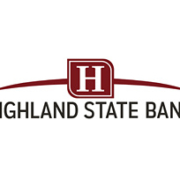
“Sometimes the best thing you can do for a loan customer is to tell them no.”
Leading Our Leaders
The Wisconsin Bankers Association (WBA) has been led by Rose Oswald Poels since 2011. In 2016, the Board of Directors welcomed its first female Chair Cynthia Erdman, who at that time served at Partnership Bank, Tomah, and is currently with Farmers and Merchants Bank of Kendall. Additionally, the Association is expected to welcome Donna Hoppenjan as WBA’s second woman as chair of the Board in the coming year.
Several women have served in leadership roles at Wisconsin’s Department of Financial Institutions (DFI), the state’s regulatory agency, including Secretary-designee Cheryll Olson-Collins, her predecessor Kathy Blumenfeld, and the division of banking’s Acting Administrator Kim Swissdorf.
Not only do these women at DFI and WBA play a substantial role in supporting the state’s banking industry, working tirelessly to advocate on behalf of all Wisconsin bankers at both the state and federal levels, for many, they serve as examples of mentors of powerful women in our industry and encourage more women every year to pursue their passions, break stereotypes, and create opportunities for both themselves and their institutions.

“I believe that an institution is doing their stakeholders — both internally and externally — a disservice if they were not promoting based on merit.”

“It is extremely inspiring and encouraging to see so many more women in executive roles in banking than ever before. Work hard and don’t be afraid to be the loudest voice in the room.”
Recognizing the Strength of Women in Leadership Roles
One frequently cited barrier to women holding leadership positions is stereotyping. In banking, male leadership has been at the forefront for centuries and unfortunately our society has been slow to recognize the misconceptions placed on women taking on these positions.
Staples states that there isn’t a one-size-fits-all solution to the challenges women often face when looking to expand their career, however, it’s important to not give up.
Although our society as a whole has become increasingly more accepting of women in positions of power, women are often being held to a higher standard than men. According to a Pew Research Center study conducted in 2018, 60% of people say that women have to do more to prove themselves than men to become top executives in businesses.
“Misconceptions such as leading too emotionally, distractions at home, and work/life imbalance affect all leaders — not just women,” said Heroux.
As our business practices and societal norms continue to evolve throughout the 21st century, many women have received greater recognition for their efforts throughout the pandemic. In fact, many businesses found that their women leaders took initiative and acted with resilience during the crisis.
An article by Forbes highlighted that aggressive, transactional approaches to business have created lower engagement, higher turnover, and the emulation of toxic behavior. As diversity, equity, and inclusion (DEI) become a greater focus of Wisconsin banks, it is important to consider how leadership style plays into this, and how both men and women alike can re-think traditional models of leadership.
It is clear that though the banking industry, and the financial sector in general, is no longer as divided as it once was, there is still work to be done in leveling the playing field for men and women alike by creating opportunities for women to expand their careers and encouraging more diversity at every level.
While women continue to push against tradition and gain leadership positions by demonstrating their abilities, seeking knowledge and information, and taking on greater responsibilities, Provancher encourages women to “actively get involved in making your bank a better place.”
“Know and understand the value that you can offer and to be able to advocate for yourself and the experience you bring to the table when necessary.”
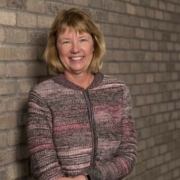
“Over the course of my banking career, I have seen more and more opportunities open up for women. It is important that we continue to provide networking opportunities, leadership development, and think outside of the box. I also would encourage all women to speak up, try new things, and promote yourself — you are your own best cheerleader!”
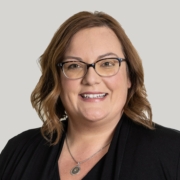
“Be your authentic self, always! If they don’t like you for you, it is not going to be a good fit long term. Get involved! With your team, with your community, with peer groups, with trade associations. Never stop learning! Banking is constantly changing, and it is a must to stay well-informed of issues, changes in the industry, and the evolution of products and services.”
*As of June 2023, women in the position of president and/or chief executive officer represented 16 of the over 170 banks in the state.

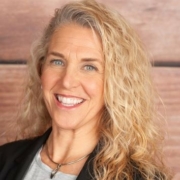
Beverly Collins, president, Laona State Bank
Doreen Dahl, president, Bank of Ontario



